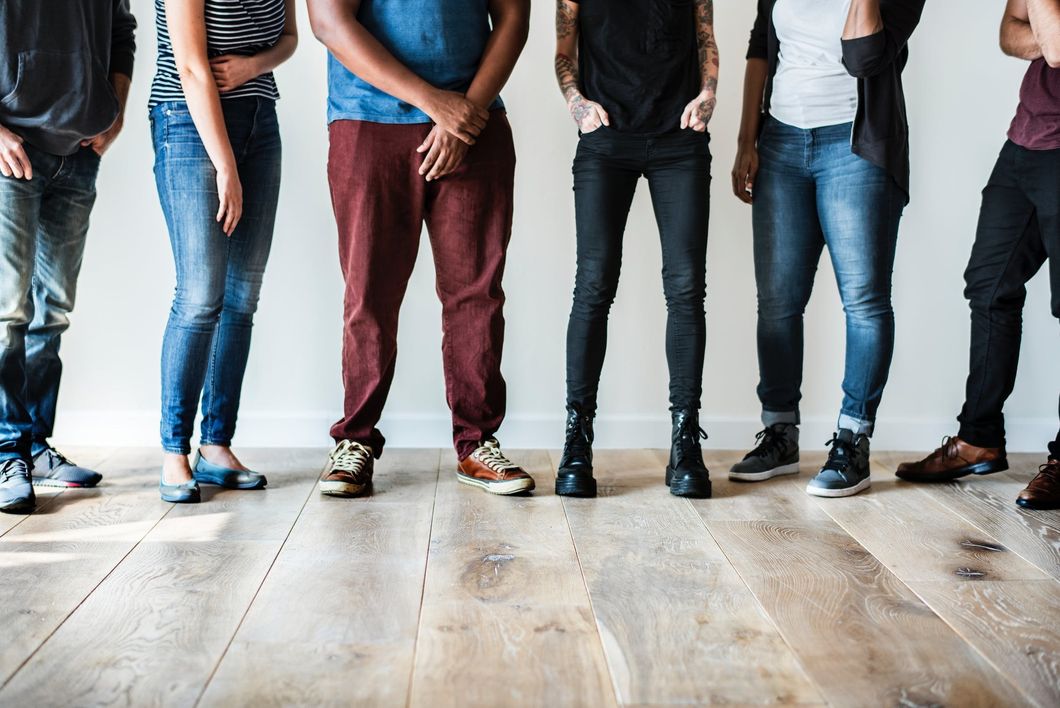Diversity is everywhere. Diversity comes in the forms of religion, color, culture, sexual orientation, and so much more. Diversity causes separation, depression, and eliminates a sense of belonging to those around us. "Your identity does not define you" (Megan Winkelseth 2018). I attended an event at Eastern Michigan University on diversity. Within this event included a discussion on people who are a part of the LGBTQ+ community and why they are included. While in the presentation Megan Winkelseth discussed what each letter of LGBTQ+ represented, the definition of diversity, inclusion, and identity. While also being at the presentation, she discussed information that may be a sensitive topic to some. These topics included: heterosexuality, heteronormativity, and high profile LGBTQ+ mentors. Diversity means something that sets you apart from another individual due to characteristics such as the color of your skin, religion, or sexual orientation. Inclusion is taking action in making sure everyone no matter their characteristics is included in any event, or place whether it is a workplace, school, store, etc. Although there is an abundance of examples that I can choose to help you better understand the prejudice that goes along with diversity I will only share a few.
My first example will be a stereotype that goes along with the African American culture. People of other races/ethnicities believe that all African American people are poorly educated. We see this every day even though you may not want to believe it is true. You see this in the graduation/success rates of African American students. Statistically in Michigan from 2011-2012 the following rates are for the completion of high school. Hispanic 64%, Asian/pacific islander 87%, African American 60% and caucasian 82%, retrieved from ("State High School Graduation Rates By Race, Ethnicity" 2018). My second example will include the diversity of sexual orientation in religion. In most cultures, it is frowned upon to have an intimate relationship with the same sex. You see the diversity in our culture when someone is very religious and believes everything their bible entails. They then do not try to understand that love is love and it should not be defined by the book written thousands of years ago. While these are very common examples they impact society very heavily, they shape our future leaders and how they see others. While everyone is "different, they are not less" (Temple Grandin 2010). During this paper, I will further explain what I have known/learned about the community, examples that will help better explain the information learned and the interpersonal communication that was used with not only the speaker but the audience.
LGBTQ+ is a broad term if you do not understand what it means. LGBTQ+ means Lesbian, Gay, Bisexual, Transgender, Queer and Plus (+) which means they are inclusive of all identities. Before this presentation, I knew about the terminology that defined this community's acronym along with a few of my friends being a part of this community. This is where my perceptions and broad knowledge came from. There was a lot that I did not have prior knowledge of such as the terminology that is used to define the "normal" sexuality which is heteronormativity. There was also something called marginalization. Defined as a circle within another. Society is the inner circle which would be heteronormativity, heterosexuality, and gender binary. The outside of the circle is the margins of the LGBTQ+ community. Society is trying to break the inner circle to eliminate the diversity of sexual orientation. This was a very good image that explained how today's society is adapting to this world that we live in. Although these are only a few of the things that I took away from the presentation this will help me better understand the LGBTQ+ community, in a better sense of what they fight for every day. Megan Winkelseth our presenter was using many hand gestures along with utilizing her platform. These nonverbal cues(she used more hand motions) showed her passion as she started to talk about a more intense issue such as what the LGBTQ+ community The audience answered some of her questions when she was asking for examples of TV shows or movies that show the LGBTQ+ community. She also discussed high profile celebrities that are a part of the LGBTQ+ community such as Frank Ocean (a singer) who pushed against the margins of the rap/hip hop community, Laverne Cox who pushed the margins of the TV community being the first transgender/African American women to have a leading role in a TV show, and Jason Collins who pushed the margins of the sports industry. During the presentation, I felt very rewarded to understand more about this community and what they have faced since it had become more of a known community.
After the event, I felt I could do more to help and maybe be a part of the Equality research center on EMU's campus. Others were rather uncomfortable or irritable to be there. Not knowing what kind of topic the presentation was going to be about could be what caused the irritability. If someone I knew was struggling to connect with the LGBTQ+ community they should be more willing to understand the other person's side of it because they may not have all of the facts that led them to that decision. They may only be believing it due to their religion, me personally I am a catholic but I do not live my life based on what the bible says. I live by the bible freely and believe everyone should be equal. Pushing yourself beyond the margins of society is eye opening to others. Listening to another's person's opinion may change yours. Assumptions are made up every day. Before you make an assumption, you need all of the facts. While furthering my education here at Eastern I will be thinking about what others have come from more closely and applying it to my experience with that community.
















